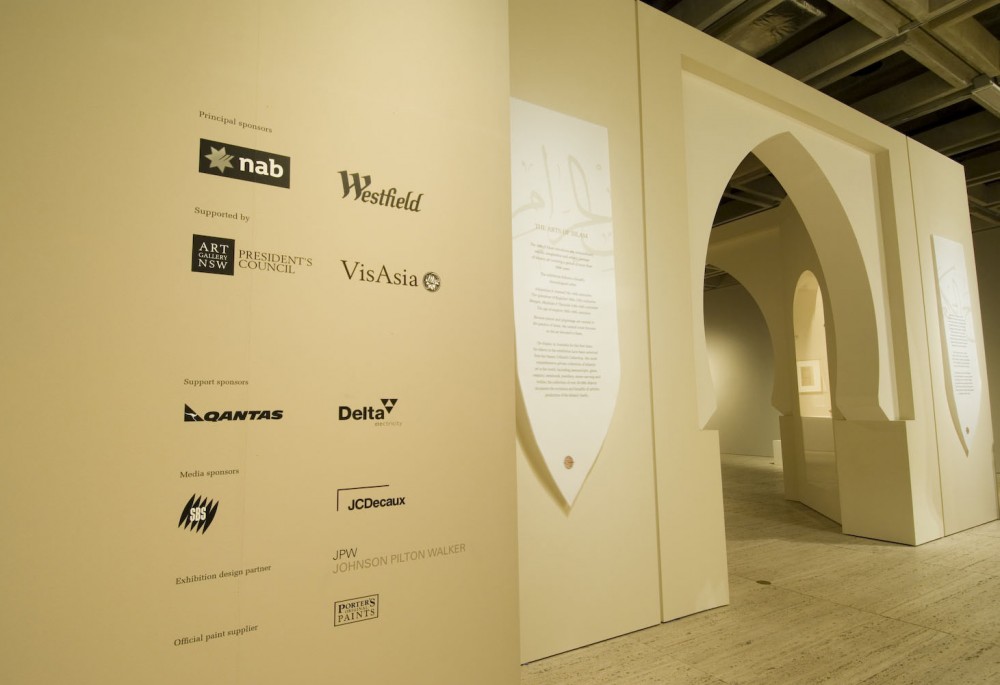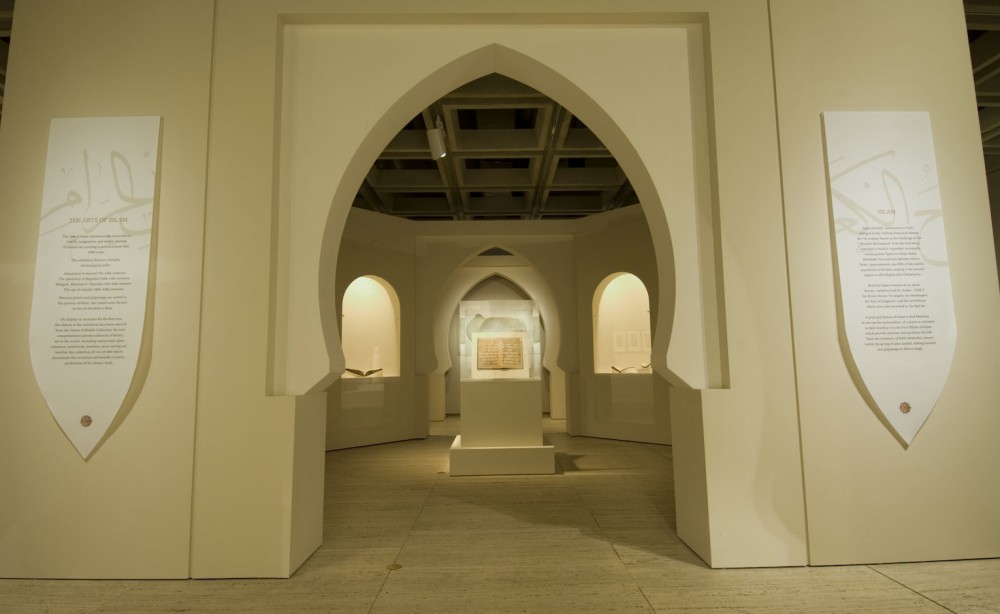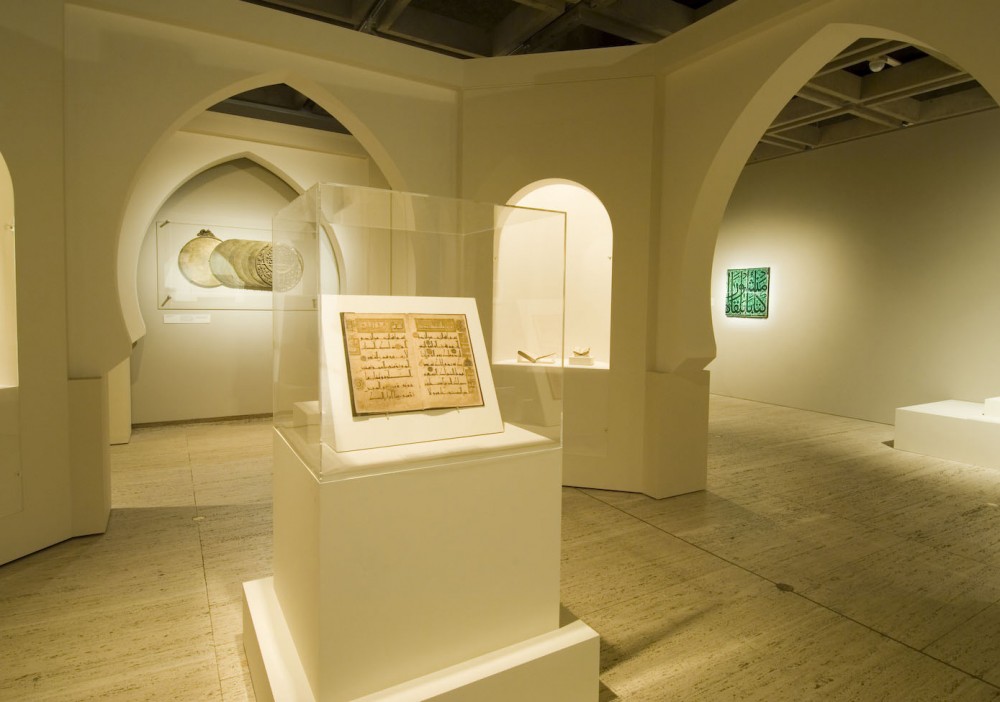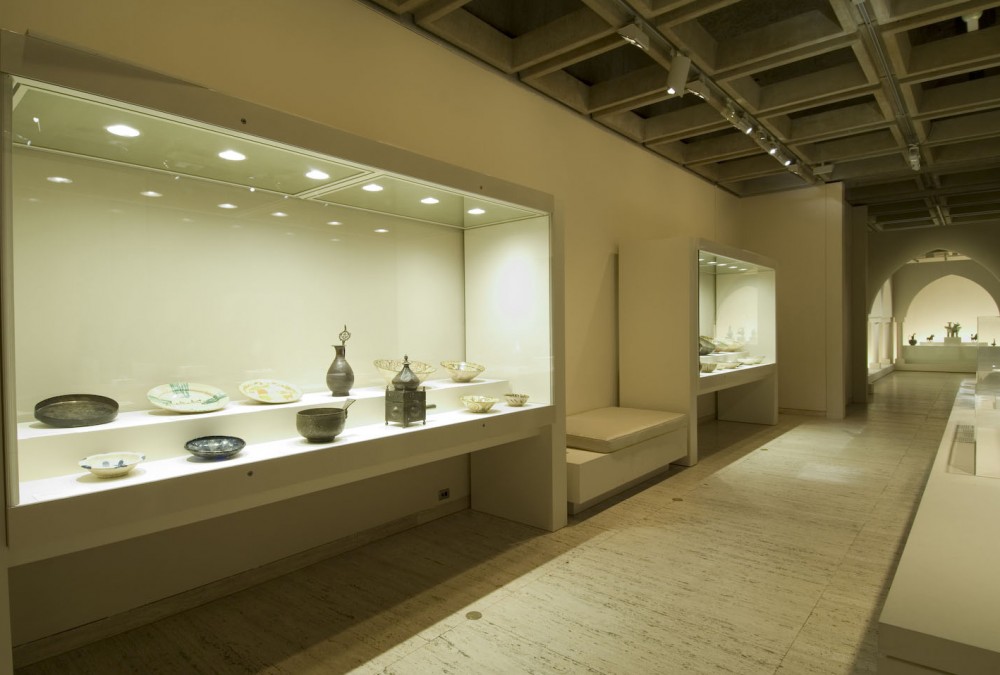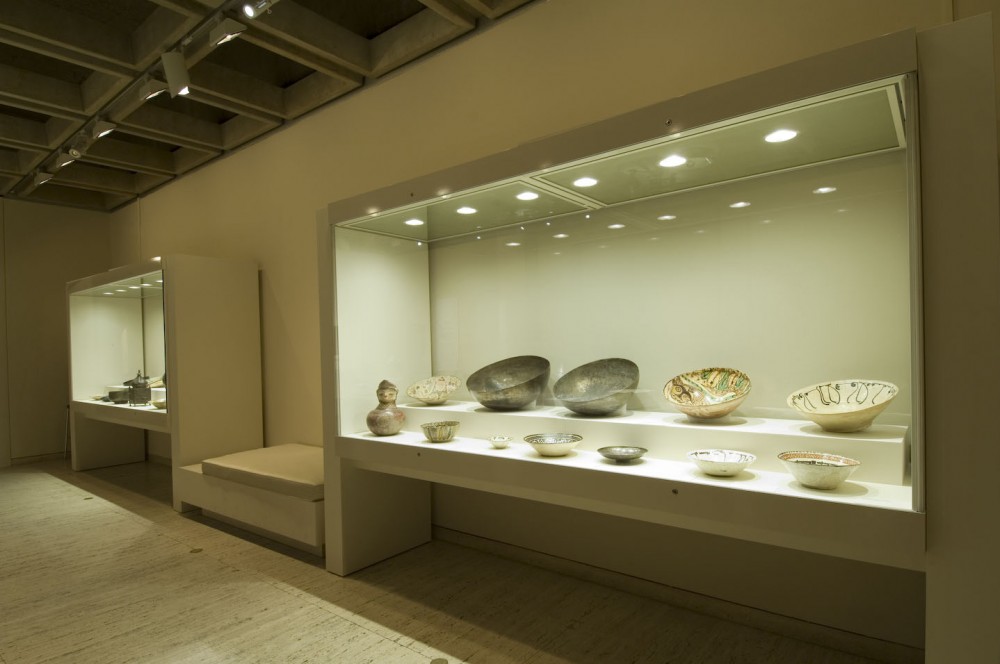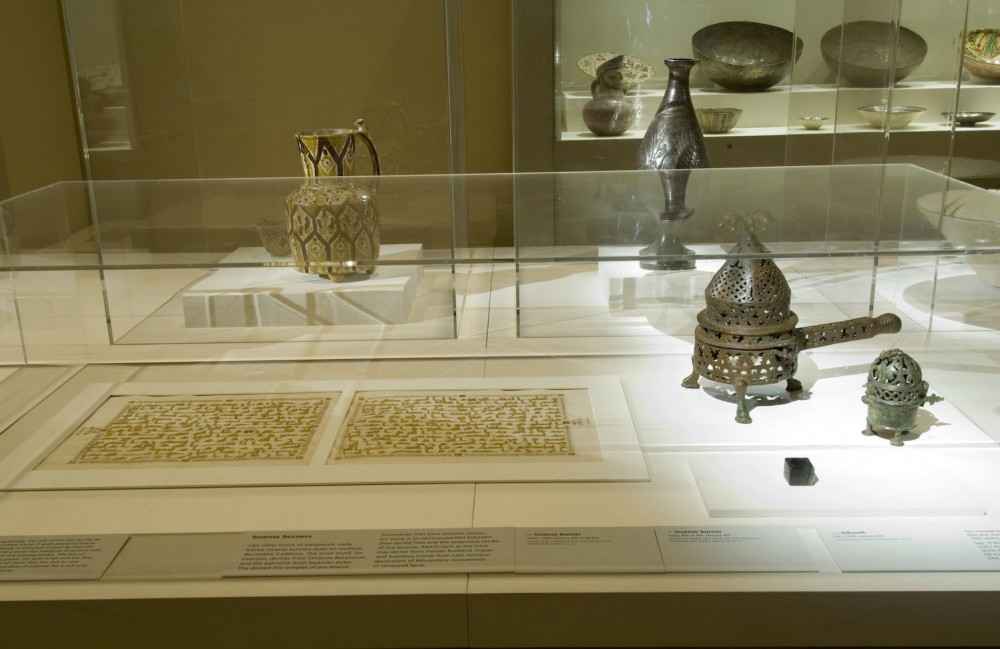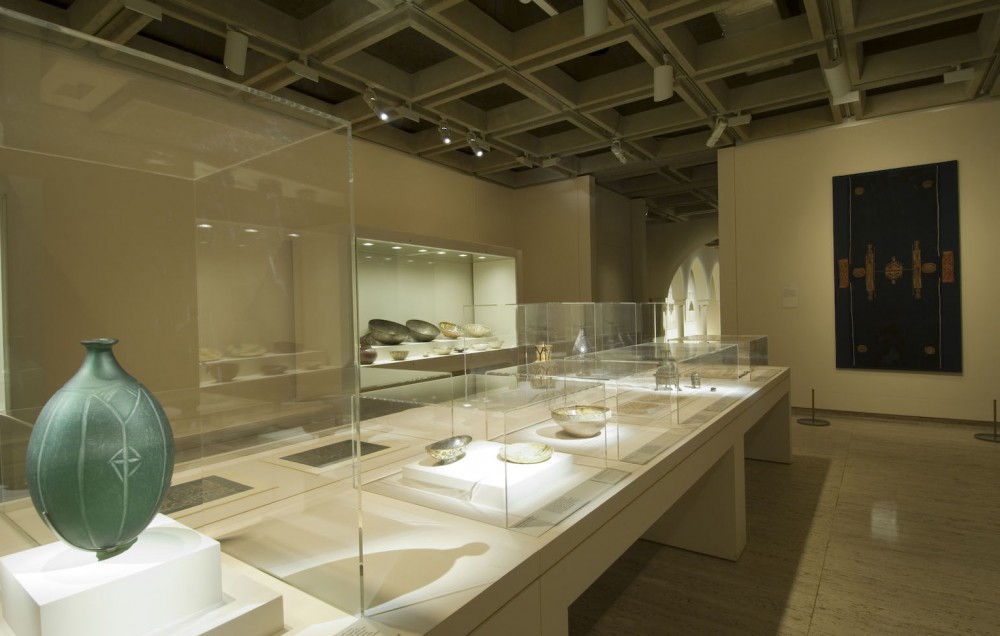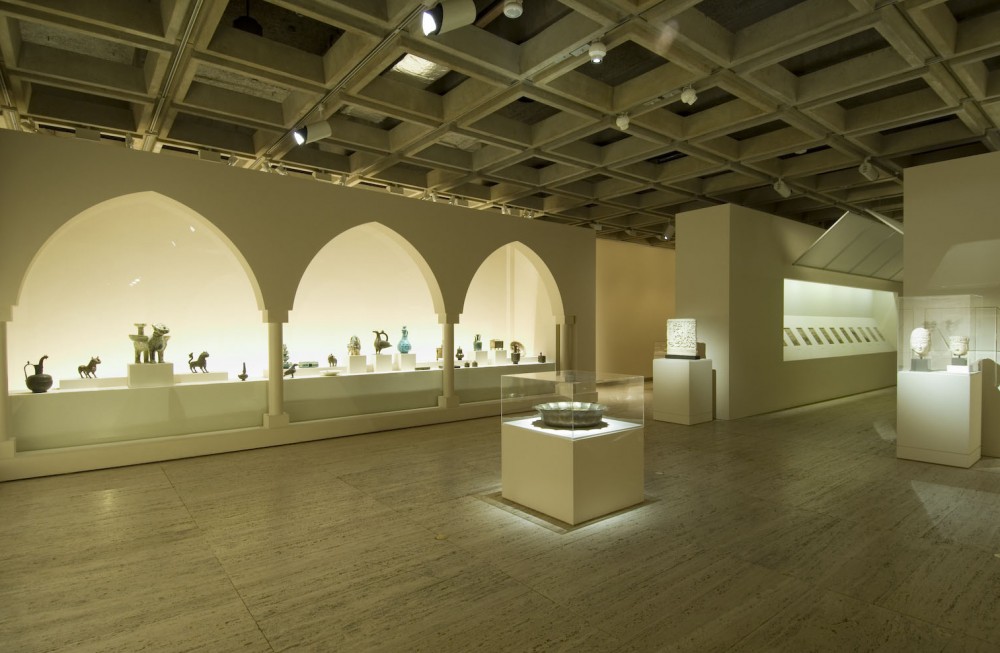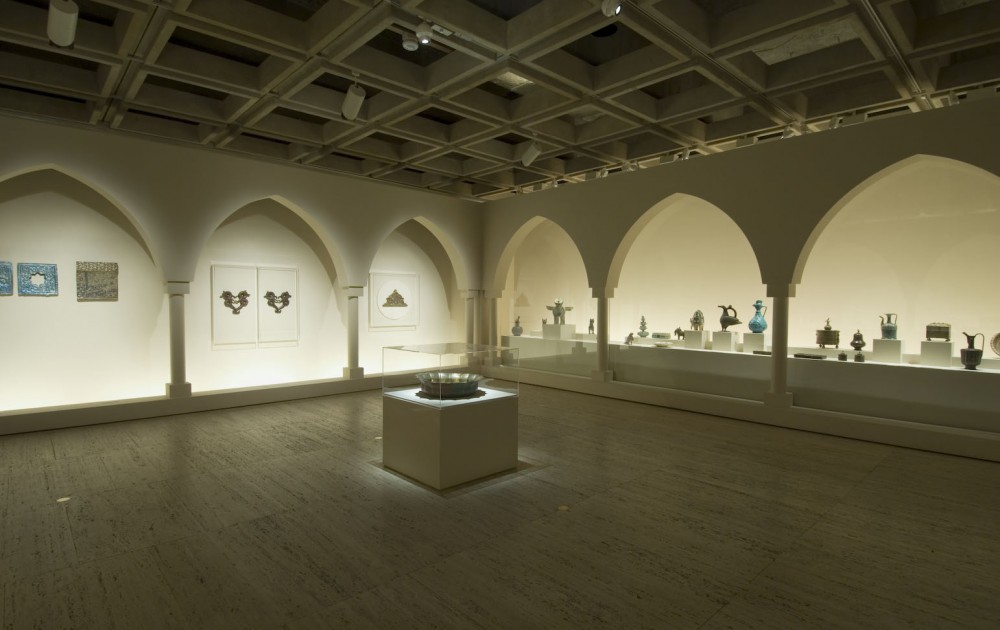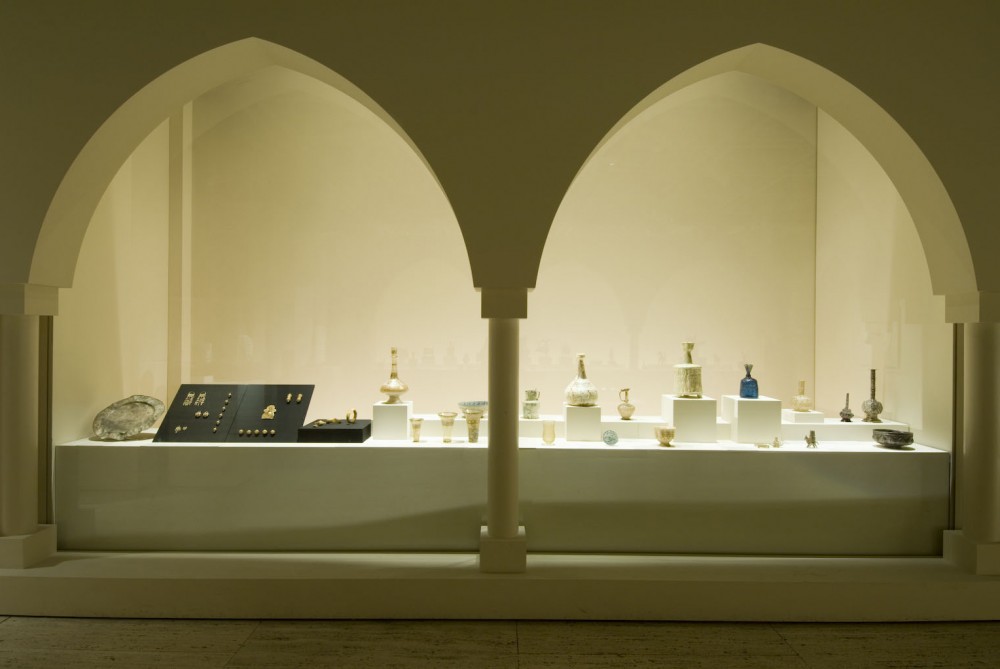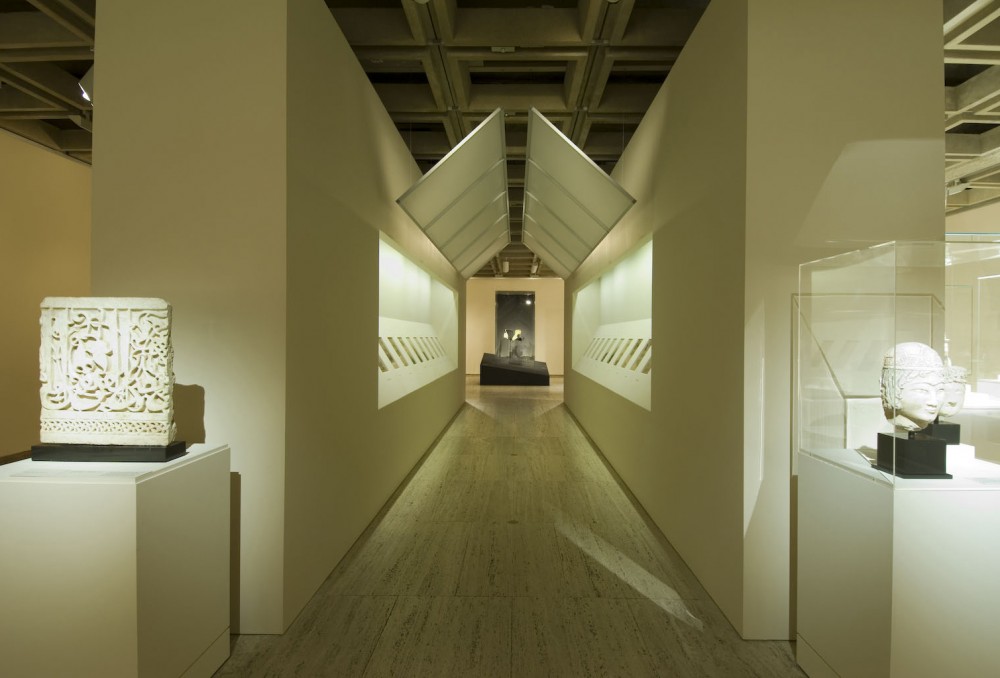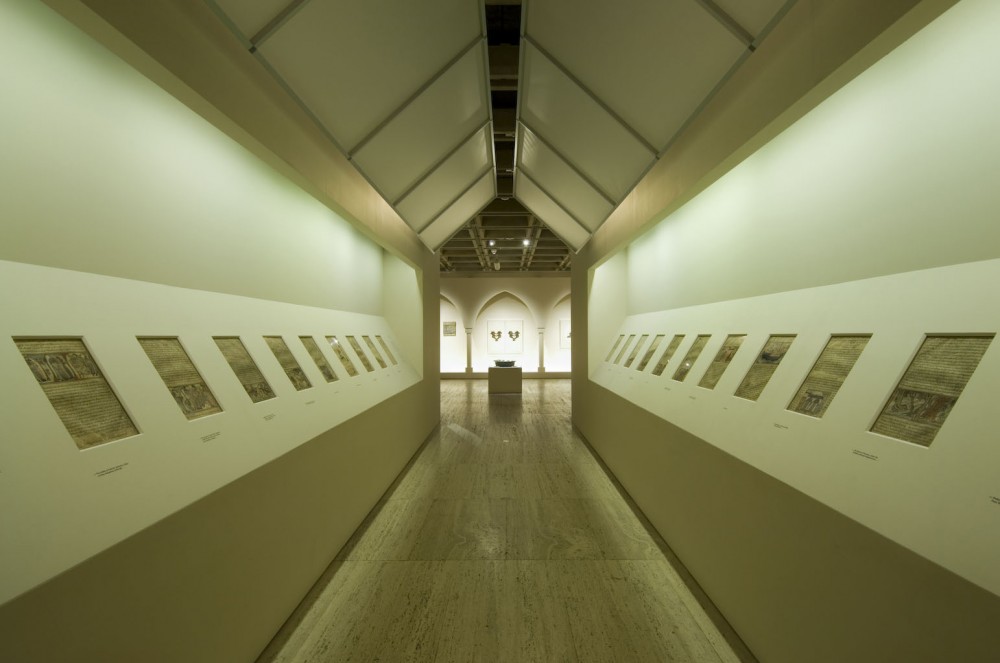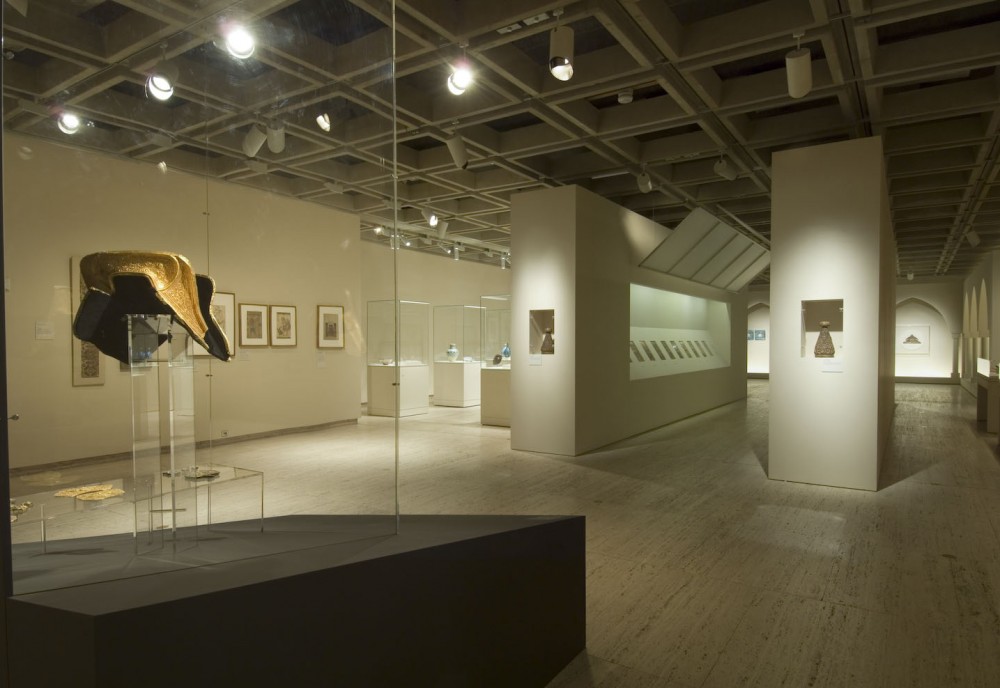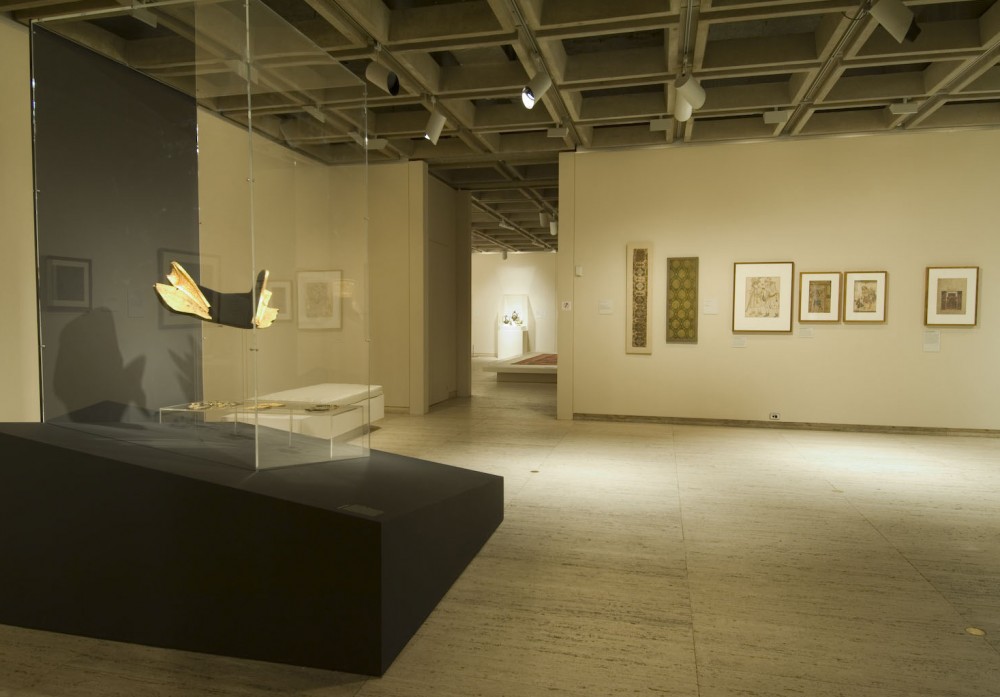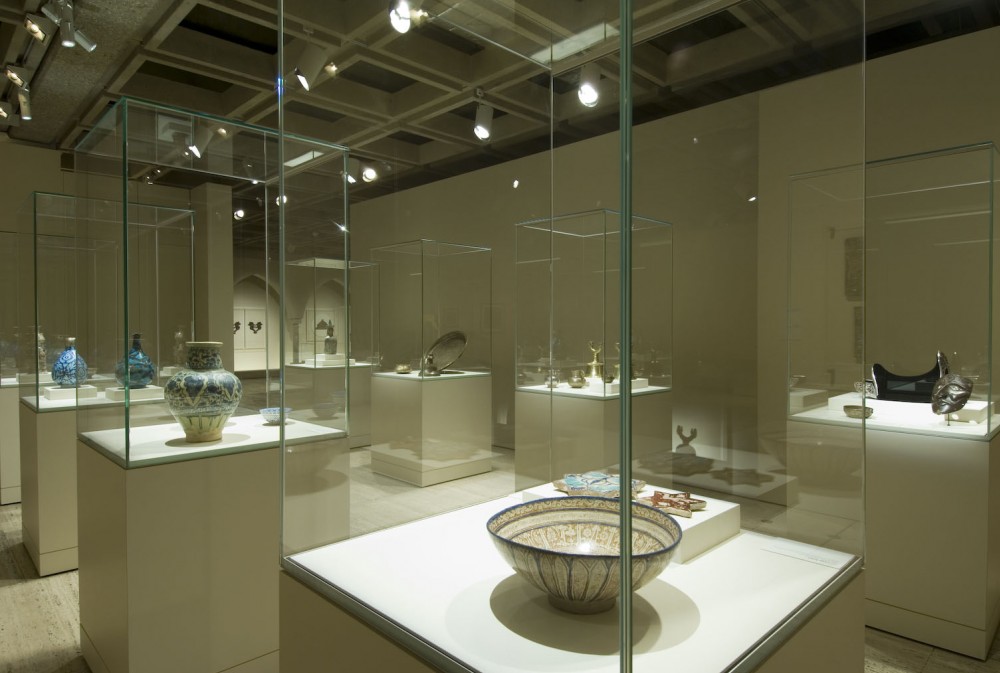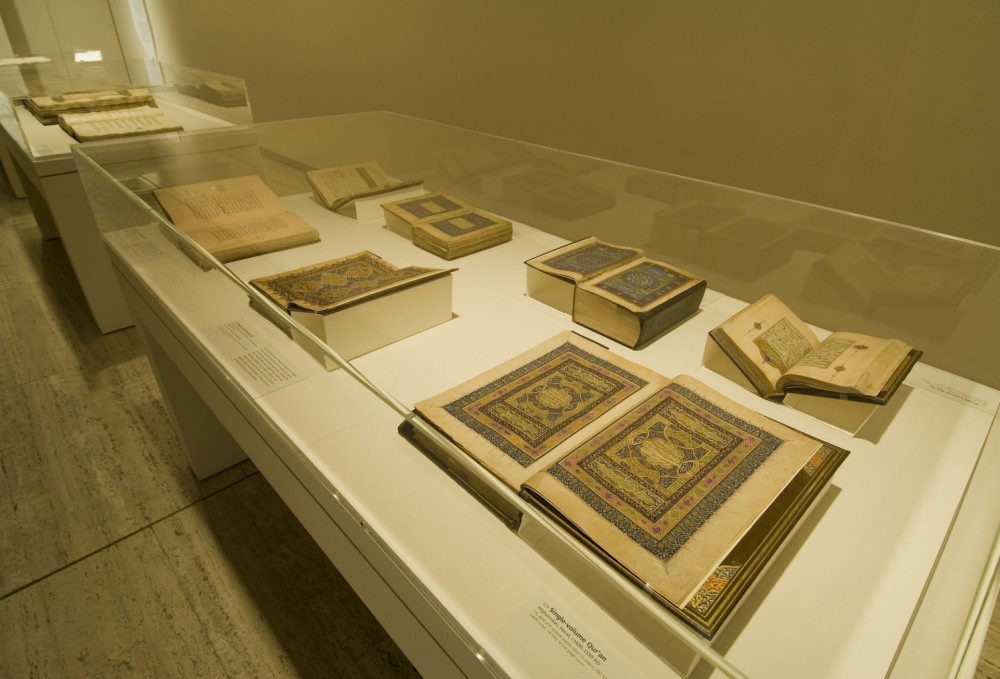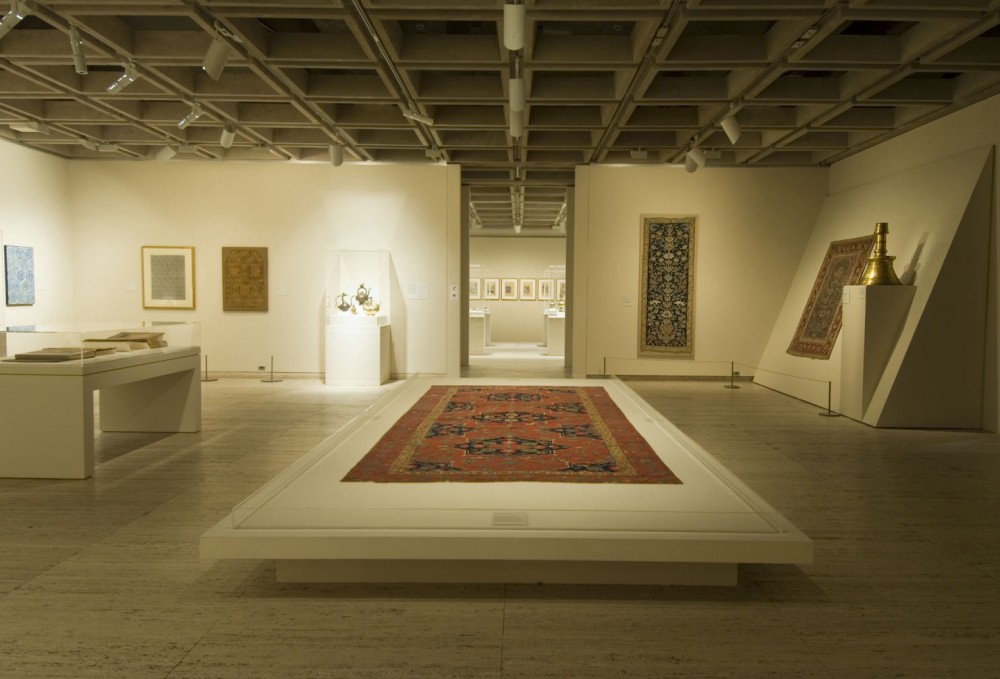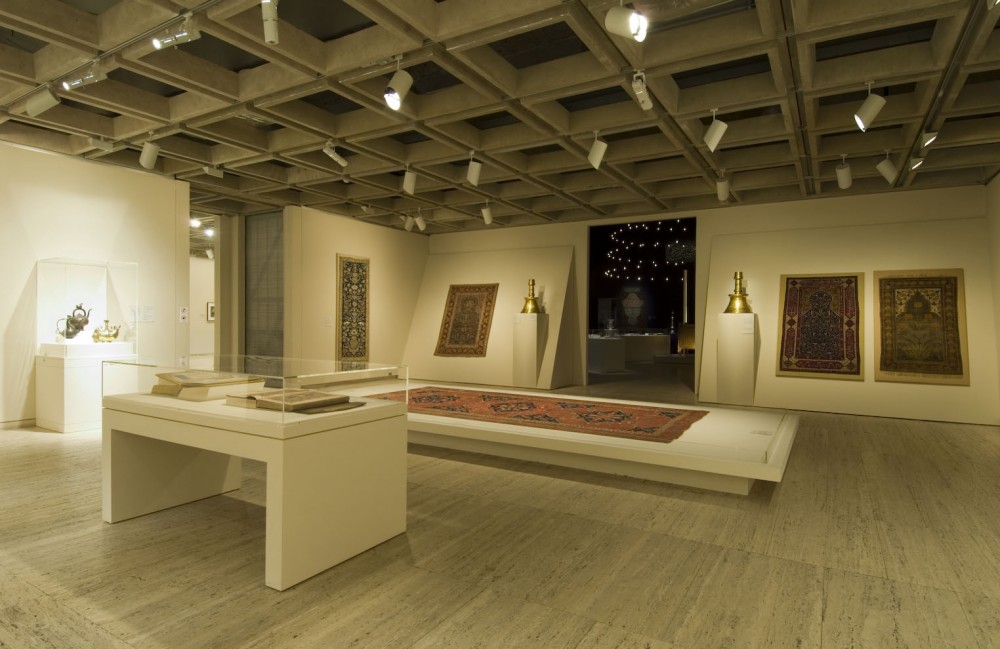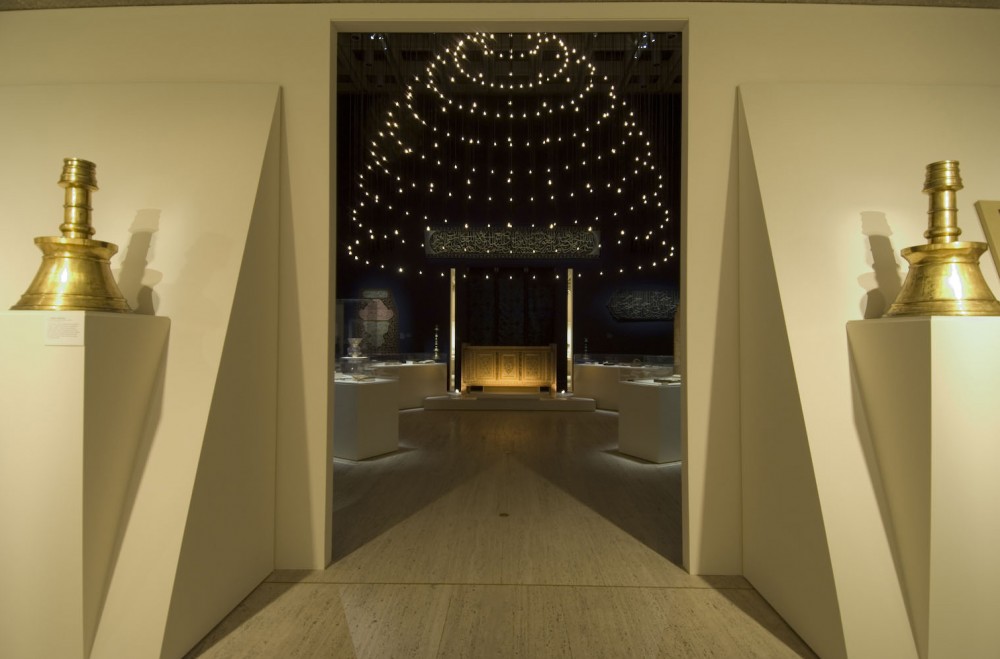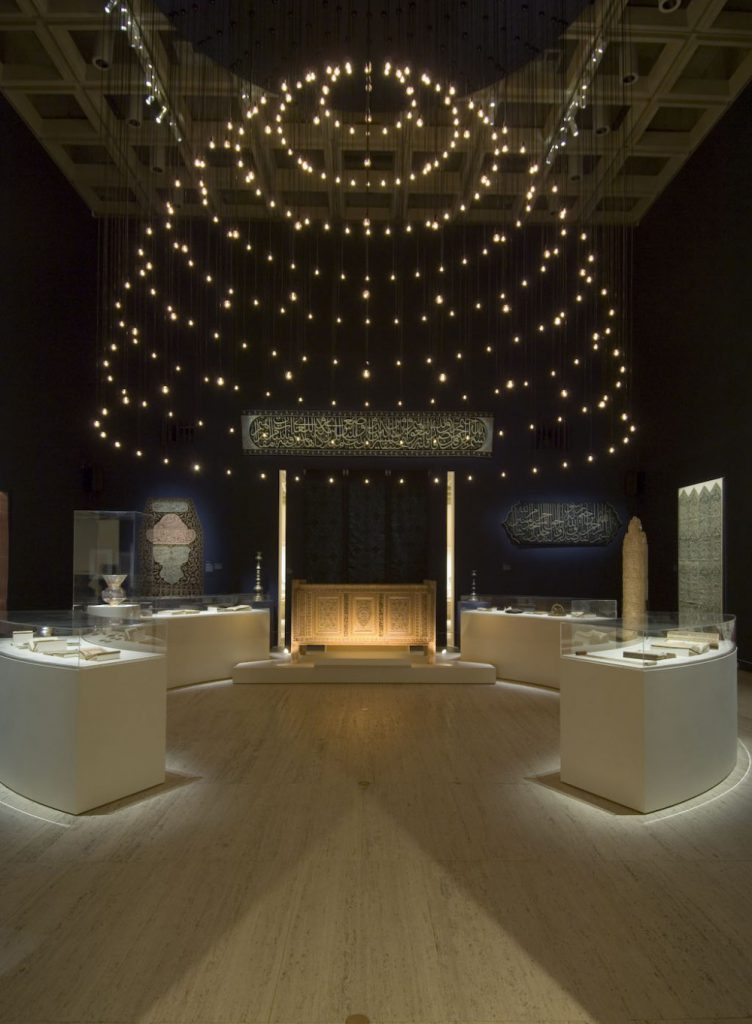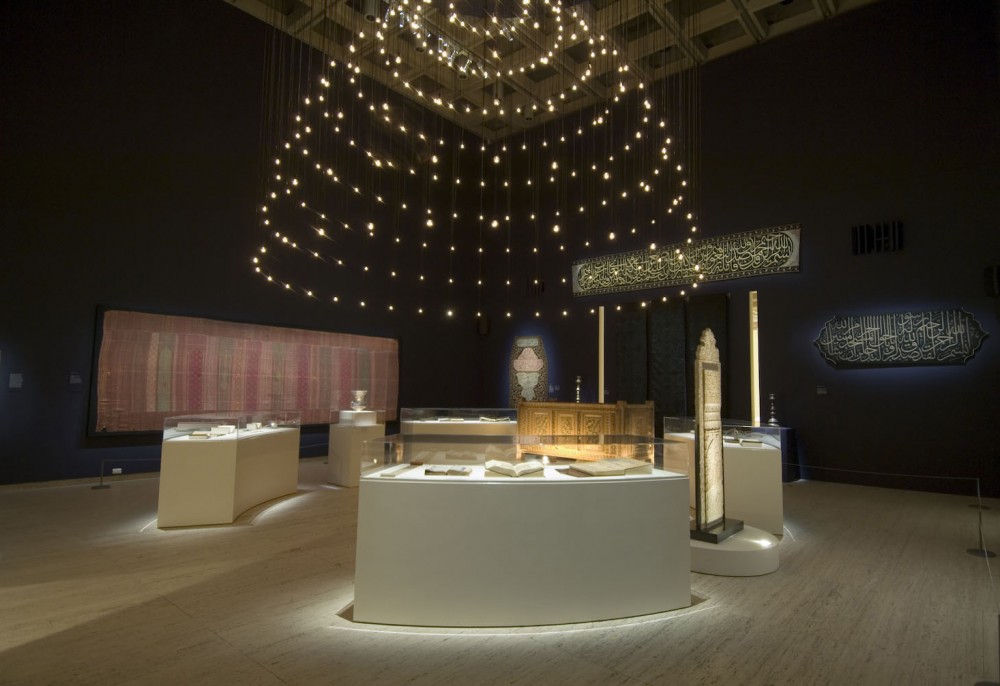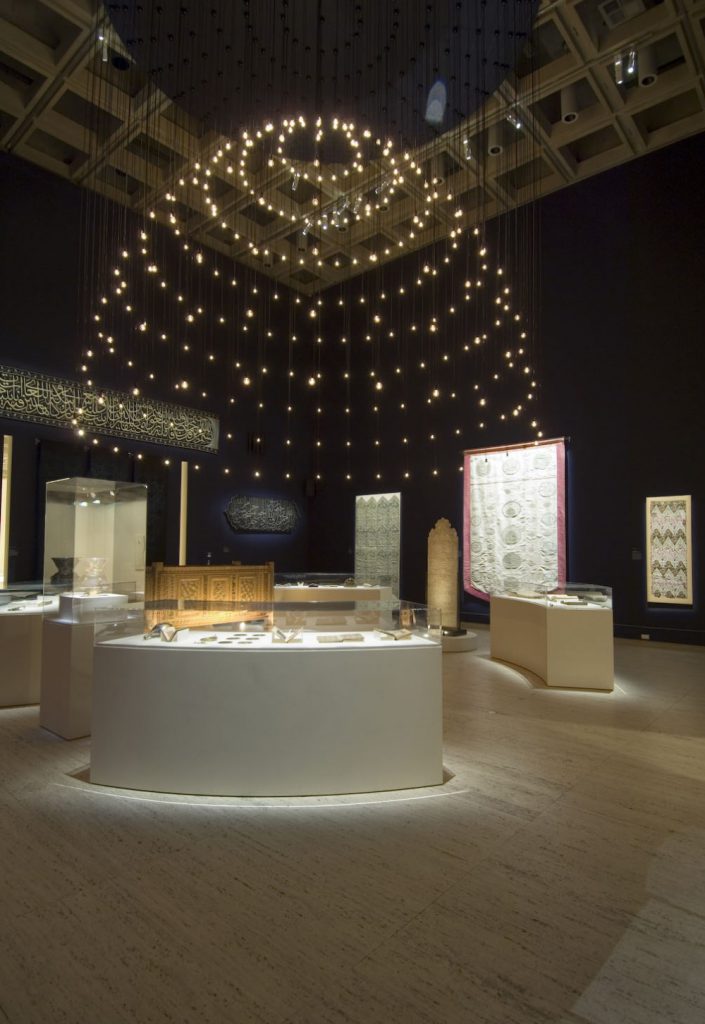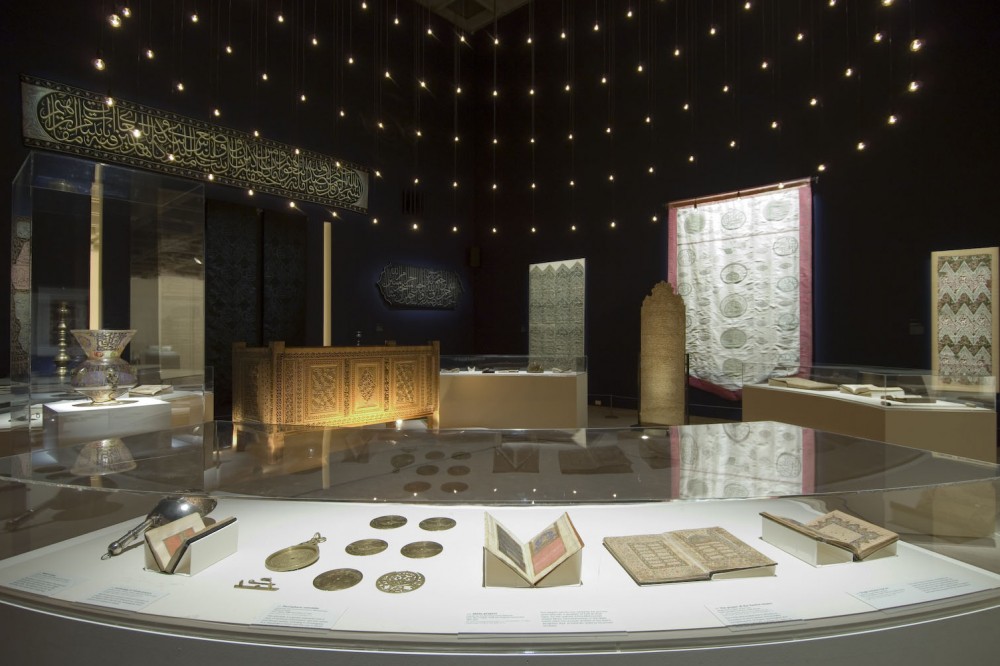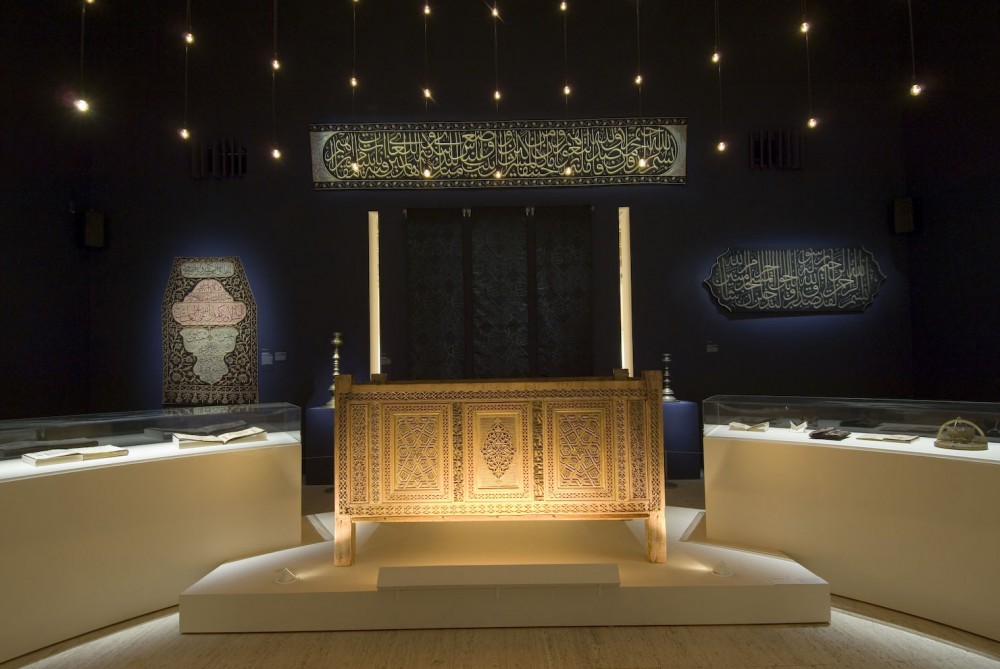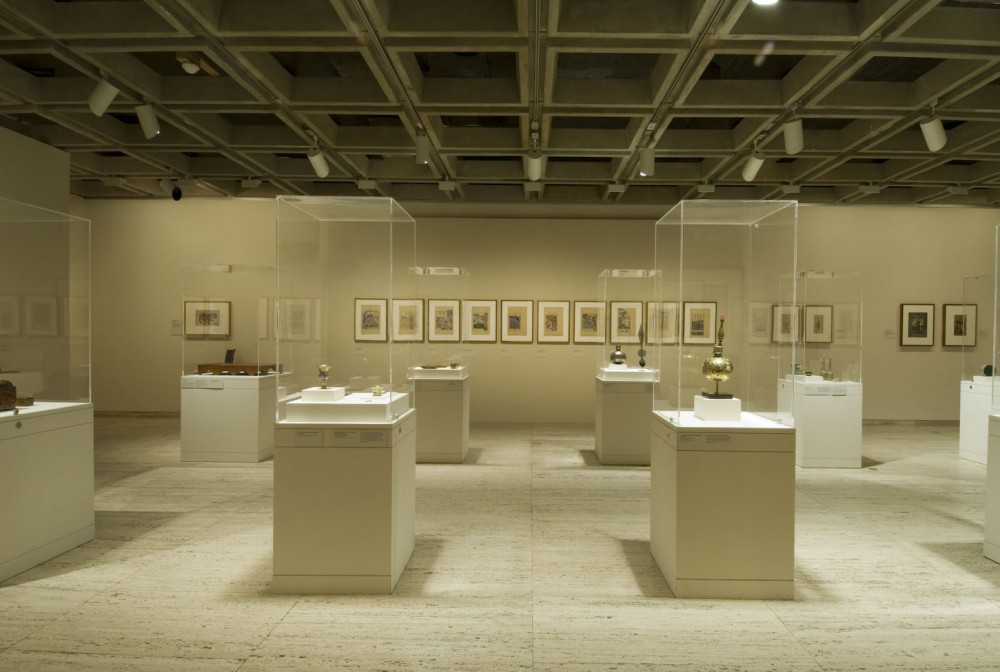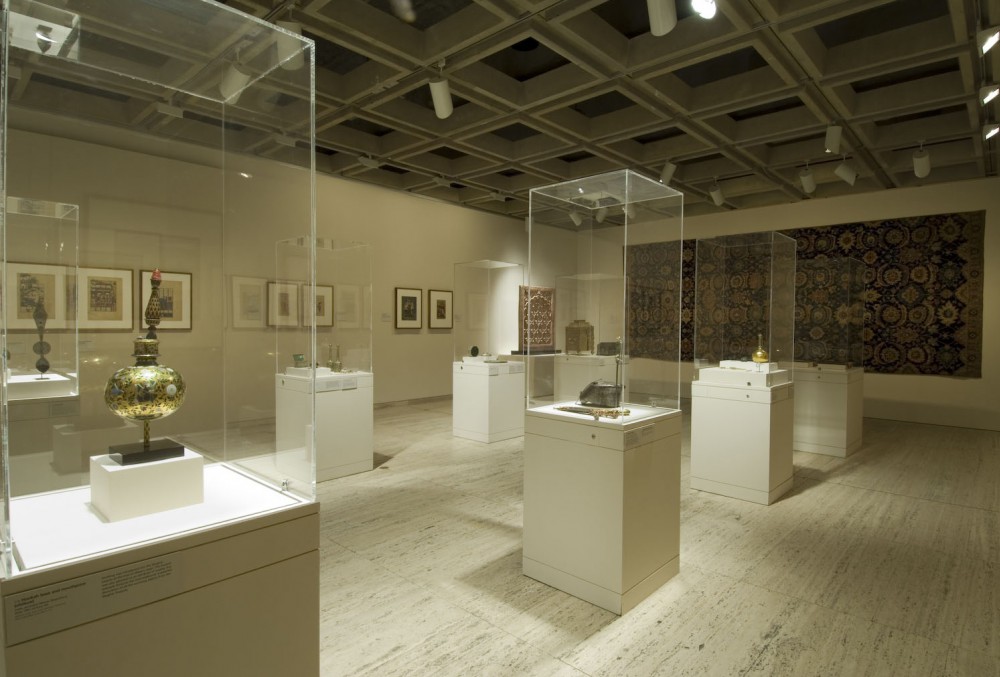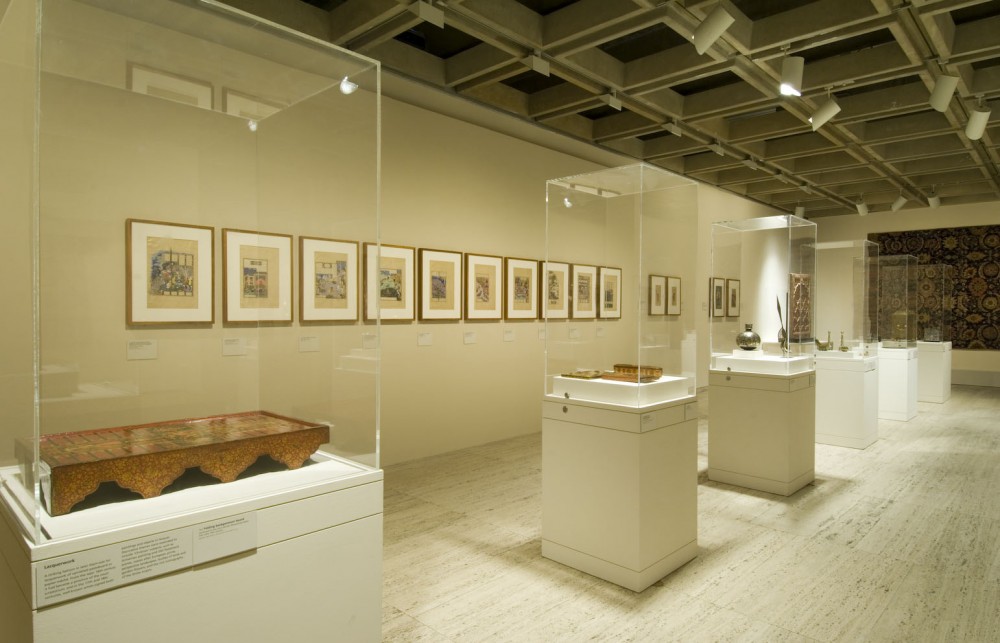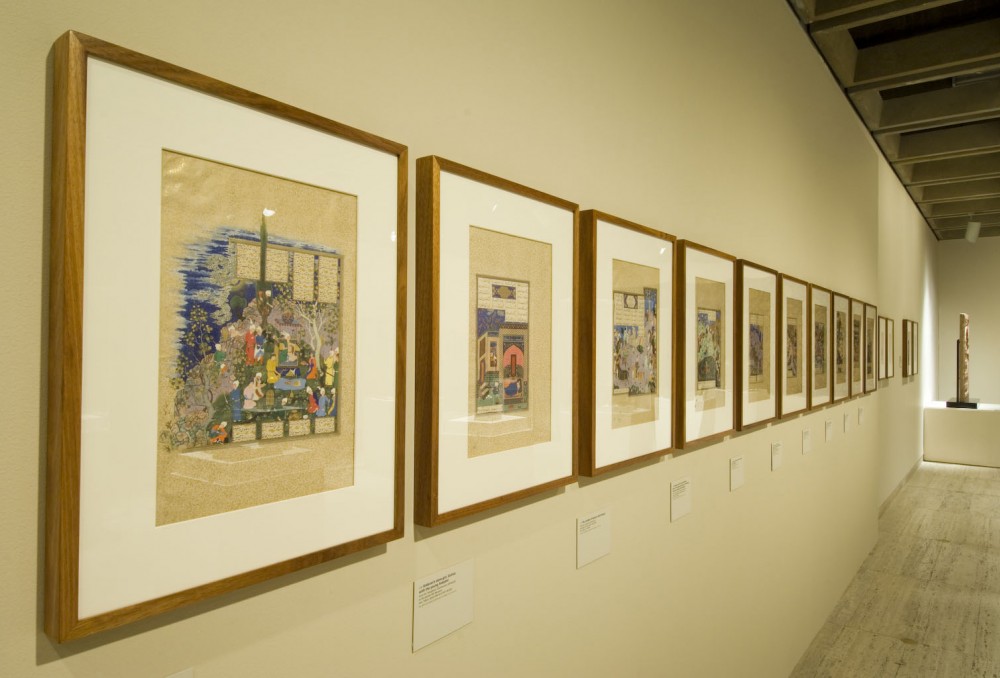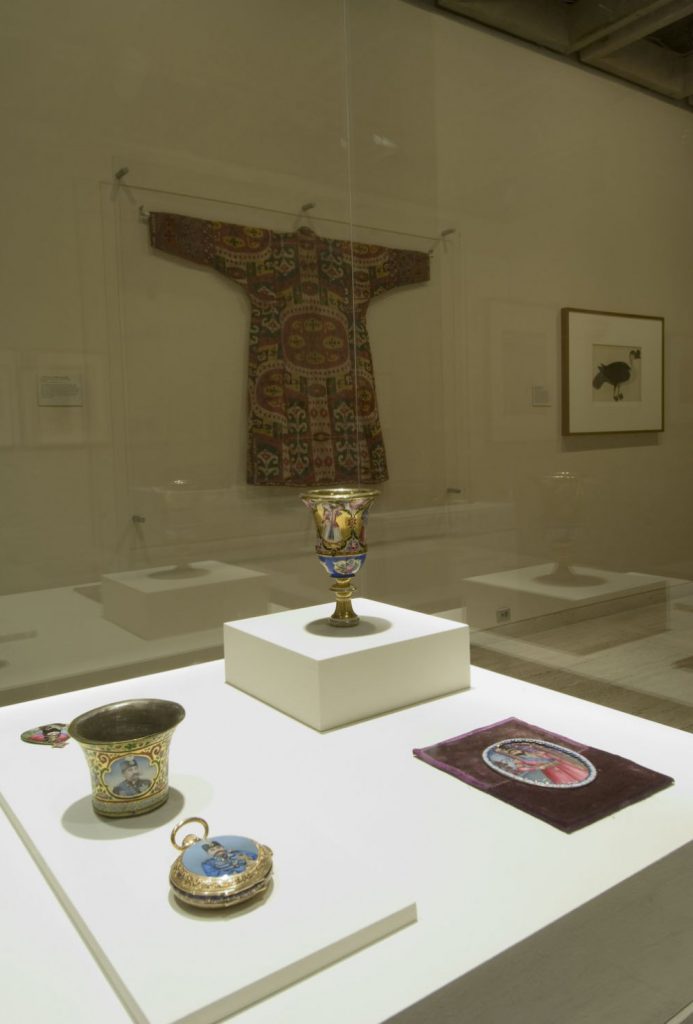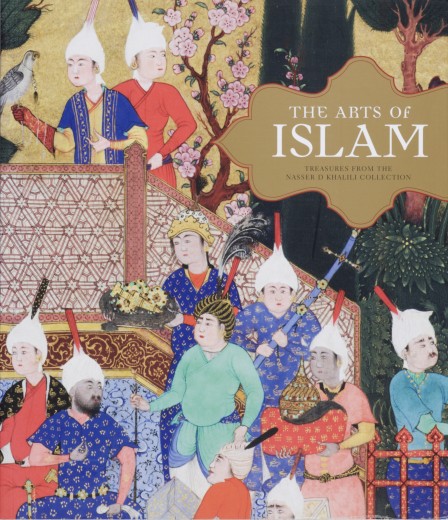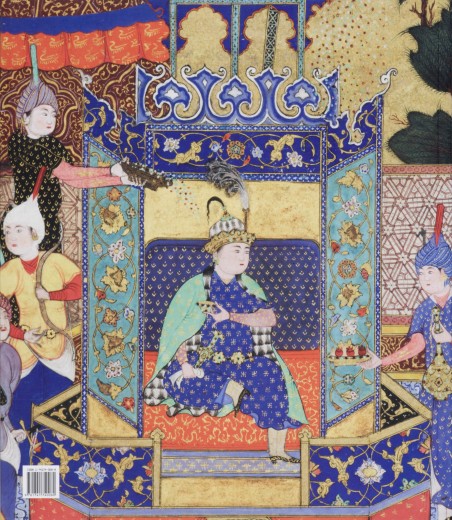


This significant exhibition presents the finest display of the Arts of the Islamic world ever seen in Australia. It is a rare opportunity to experience rich and diverse artistic achievement from the 7th to the 19th centuries.
Created for sultans| princes and merchants| these treasures include exquisite glass| ceramics| metalwork and jewellery| Qur’ans and illustrated manuscripts| magnificent textiles| carpets and paintings.
Over 350 masterpieces reveal the far-reaching contact between the Islamic empires and their conquered lands from Spain and Morocco| across Northern Africa and Egypt to the Middle Eastern nations of Iran| Iraq| Syria and Palestine| and as far east as Mongolia| India and China.
from The Arts of Islam| Art Gallery NSW| exhibition events leaflet.
The pieces chosen for this exhibition were selected from the vast holdings of the Khalili Collection to present a comprehensive and panoramic view of the arts of the Muslim world. As the aim of the exhibition was primarily educational| the display – which was designed by the Sydney architect Richard Johnson – followed a chronological timeline for the most part| with the majority of objects divided between four historical groups. The exhibition opened with an introductory section on Islam and its spread| the Prophet Muhammad and the common ground between Islam| Judaism and Christianity. ‘Adaptation and Innovation’ explored the art produced between the 7th and the 10th centuries| a transitional period in which many of the foundations of Islamic art were laid. Early copies of the Qur’an were shown alongside ceramics| metalwork| glass and textiles| many of the latter reflecting earlier Byzantine and Sasanian artistic traditions.
‘The Splendours of Baghdad’ covered art from the medieval period (10th – early 13th centuries)| demonstrating the outstanding achievements of artists working for the Abbasid court and its contemporaries| and the technical innovations associated with this period. ‘Phoenix Rising’ covered the mid-13th to the 15th centuries| illustrating the arts produced in Iran| Central Asia| the Middle East and Turkey in the wake of the Mongol invasion during the Ilkhanid| Mamluk and Timurid periods. The art of this period is very rich in intricate detail| seen to best effect in the illumination of Qur’ans and manuscripts| of which several examples were included. Prominent in this display were the gold fittings for a saddle and associated horse trappings and belt attachments and the illustrated folios from the celebrated Jami‘ al-Tawarikh (‘The World History’) of The Ilkhanid vizier Rashid al-Din.
‘The Age of Empires’ was devoted to the art of the Ottomans| Safavids| Mughlas and Qajars (16th – 19th century). This period saw the development of blue-and-white and Iznik ceramics and tiles| fine carpets and textiles| richly enamelled and jewelled objects and exceptionally beautifully illuminated Qur’ans and illustrated manuscripts| best exemplified by the Qur’an and the 10 stunning folios from the Shahnamah (‘Book of Kings’) produced for the Safavid ruler Shah Tahmasp. The exhibition closed with a display showing the interaction between the Muslim world and Europe and the cross influences seen in arts produced in the later 19th century.
At the very heart of the exhibition| under a magnificent dome of light| ‘Pilgrimage and Prayer’ was devoted to the practice of the religion of Islam. This display included prayer books| scientific instruments used to determine the direction and times of prayer| depictions of the holy places in Islam| pilgrimage scrolls and textiles associated with the two holy sanctuaries at Mecca and Medina.
A one-day symposium| a series of lectures| gallery talks and a wide range of educational and cultural programmes accompanied the exhibition.


